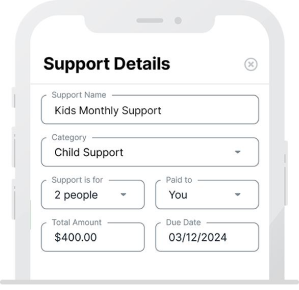In today’s rapidly evolving work environment, the aging workforce is becoming an increasingly significant challenge for employers. With more employees taking on the role of caregivers for elderly family members, it’s essential for businesses to recognize and address the unique needs of these workers. Failing to provide adequate support not only impacts employee wellness and experience but can also affect overall productivity and retention rates.
The Rise of Caregivers in the Workforce
In the US, over 55 million caregivers exchange nearly $300 billion annually for support & related expenses. Globally, over 300 million caregivers exchange over $990 billion annually for similar needs. There is a lack of standardized processes to help families share, manage, & track these transactions. Among them, a significant number are balancing their caregiving duties with their professional responsibilities. These primary caregivers often include adult children, spouses, and even grandparents, all juggling the demands of their jobs while managing the complex needs of elderly family members.
The Financial Burden of Caregiving
One of the most pressing issues for caregivers is the financial strain associated with eldercare. The costs are often overwhelming, covering everything from medical expenses and medications to home modifications and specialized equipment. According to the National Alliance for Caregiving, caregivers spend an average of $7,000 annually out of pocket on caregiving-related expenses. These costs can quickly deplete savings, leading to increased debt, delayed retirement plans, and a significant financial burden.
The Impact on Employee Wellness and Experience
Caregivers face numerous challenges that can affect their performance and well-being at work:
- Increased Stress and Burnout: The dual pressures of caregiving and professional responsibilities can lead to high levels of stress, anxiety, and burnout. This can manifest in reduced productivity, higher absenteeism, and even health issues, affecting the overall employee experience.
- Work-Life Balance Challenges: Caregivers need flexible work hours, time off for medical appointments, and the ability to work remotely. Without adequate support, they may struggle to maintain a balance, leading to job dissatisfaction and increased turnover rates.
- Financial Strain: Beyond the emotional toll, caregivers often face significant financial challenges. This includes not only the direct costs of caregiving but also the loss of income due to missed work days or reduced hours. Financial caregiving impacts their ability to save for the future, further exacerbating stress and anxiety.
- Productivity Loss: Juggling caregiving responsibilities and work often results in decreased productivity levels at the workplace, as caregivers find it challenging to focus and fully engage in their professional duties.
- Workplace Absenteeism: Caregivers are more likely to miss work or take unplanned leaves due to their caregiving responsibilities, which can have negative consequences on their career progression and team dynamics.
Why Employers Must Address Elderly Care Support
- Enhancing Employee Wellness: Prioritizing caregiver support is crucial for promoting employee wellness. Programs that offer financial assistance, counseling services, and access to home care can significantly reduce stress and improve overall well-being. This holistic approach to employee wellness fosters a supportive and caring workplace culture.
- Improving Employee Experience: Supporting caregivers enhances the employee experience, leading to higher job satisfaction and loyalty. Flexible work arrangements, caregiver leave policies, and access to eldercare resources demonstrate an employer’s commitment to its workforce, boosting morale and engagement.
- Boosting Productivity and Retention: Caregivers who feel supported are more likely to remain productive and engaged at work. Offering caregiver support not only reduces absenteeism but also improves retention rates, saving companies from the high costs associated with employee turnover. A supportive environment can also attract top talent, particularly those who value workplace wellness and inclusivity.
Implementing Effective Caregiver Support
To address the needs of the aging workforce, employers can take several proactive steps:
- Develop Comprehensive Caregiver Support Programs: Create programs that offer financial planning assistance, access to elder care services, and caregiver support groups. Partnering with local eldercare providers to offer discounted services or consultations can also be beneficial.
- Promote Flexible Work Arrangements: Implement policies that allow flexible hours, remote work options, or caregiver leave. These changes can help caregivers manage their responsibilities more effectively, reducing stress and enhancing productivity.
- Provide Educational Resources and Workshops: Host workshops on caregiving topics, financial caregiving strategies, and stress management. These programs empower caregivers with the knowledge and tools they need to navigate their dual roles confidently.
- Enhance Workplace Wellness Programs: Integrate eldercare support into existing wellness programs. Offer seminars on caregiving, provide access to counseling services and introduce wellness apps that help caregivers manage their health and well-being.
SupportPay.com: A Key Resource for Caregiver Support
SupportPay.com is an invaluable tool for employers looking to enhance their caregiver support offerings. The app streamlines the financial aspects of caregiving, helping employees manage their expenses efficiently. Here’s how SupportPay can be integrated into your employee benefits program:
- Facilitate Collaboration: SupportPay now allows you to add multiple families, enabling independent management of each financial relationship. In addition, an unlimited number of family members or participants can be added to an account, accommodating diverse family structures and shared financial responsibilities, from step-parents to siblings.
- Track Expenses Easily: SupportPay allows caregivers to log and categorize all caregiving-related expenses, making sharing expenses more simple and more transparent between family members.
- Manage Payments and Bills: The app helps caregivers set up and manage payments for medical bills, home modifications, and other caregiving costs, reducing the hassle and stress associated with financial caregiving.
- SupportPay and WeParent Integration: As we move closer to fully integrating SupportPay (the leading platform to manage family finances) and WeParent (the leading platform to manage schedules and communicate with each other), you can now use the same login and password to access both solutions, seamlessly.
By incorporating SupportPay into your employee benefits program, you provide a practical solution that supports your caregivers, helping them manage their finances and reducing the burden of caregiving. This investment in your employees’ well-being not only supports their personal needs but also enhances their engagement and productivity at work.
A Call to Action for Employers
The aging workforce challenge is real, and the need for elderly care support is more urgent than ever. By understanding the complexities faced by caregivers and implementing comprehensive support strategies, employers can create a more supportive, productive, and loyal workforce. Embracing tools like SupportPay.com can streamline the caregiving process, offering practical support and enhancing your current employee benefits program. Let’s ensure that our workplaces are not only places of productivity but also sanctuaries of support and well-being for all employees. To learn more about how you can add SupportPay as an integral offering to your employee benefits program check out our website at https://supportpay.com/employee-benefits/









